Coastal Margins Team
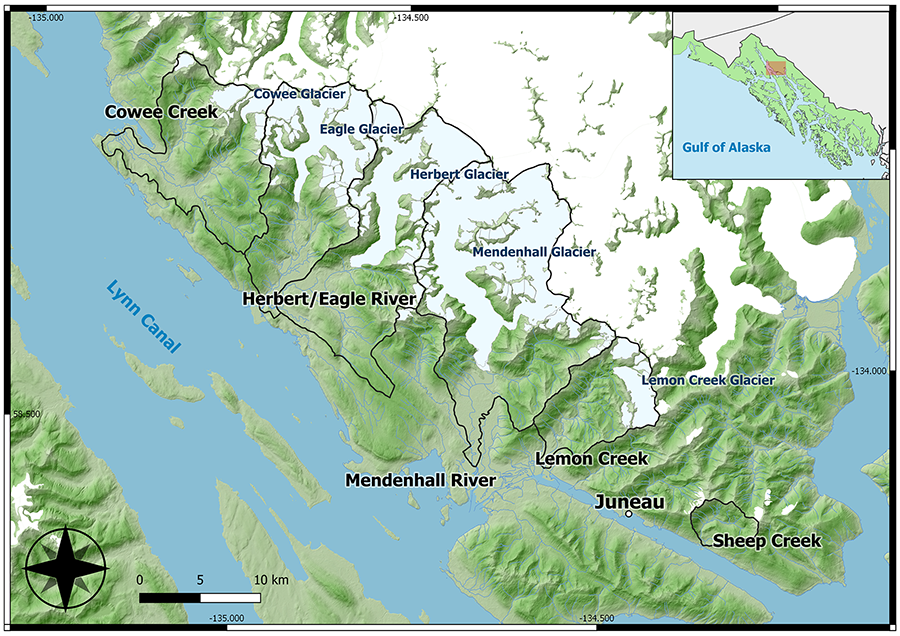
Nearshore marine habitats along the Gulf of Alaska play a vital role in life stages of many marine species important to Alaskans, and these habitats are strongly influenced by discharge from adjacent watersheds. Warming temperatures are increasing glacier volume loss and precipitation is increasingly falling as rain rather than snow, both of which affect the magnitude and seasonal timing of freshwater discharge. Despite the imminence and scale of these changes, we have limited understanding of how they will affect the biophysical and chemical structure and functioning of downstream coastal ecosystems.
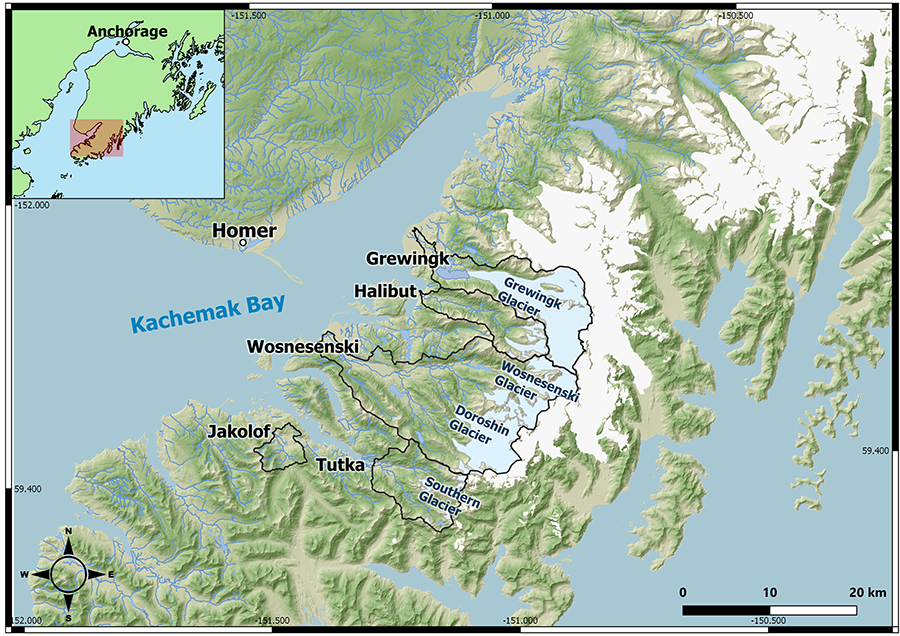
F&I Coastal Margins researchers address this challenge through a coordinated research effort encompassing freshwater and estuarine research in 10 Gulf of Alaska watersheds - five on Lynn Canal and five in Kachemak Bay - that represent a gradient from glacial to non-glacial coastal waters. Researchers are working to quantify biological responses to climate-induced changes in physical and chemical conditions along this gradient, and to understand the potential responses of fishing communities to resulting shifts in ecosystem services. The animation video below explains the Coastal Margins this "space for time" sampling methodology.
The Coastal Margins team has three research goals:
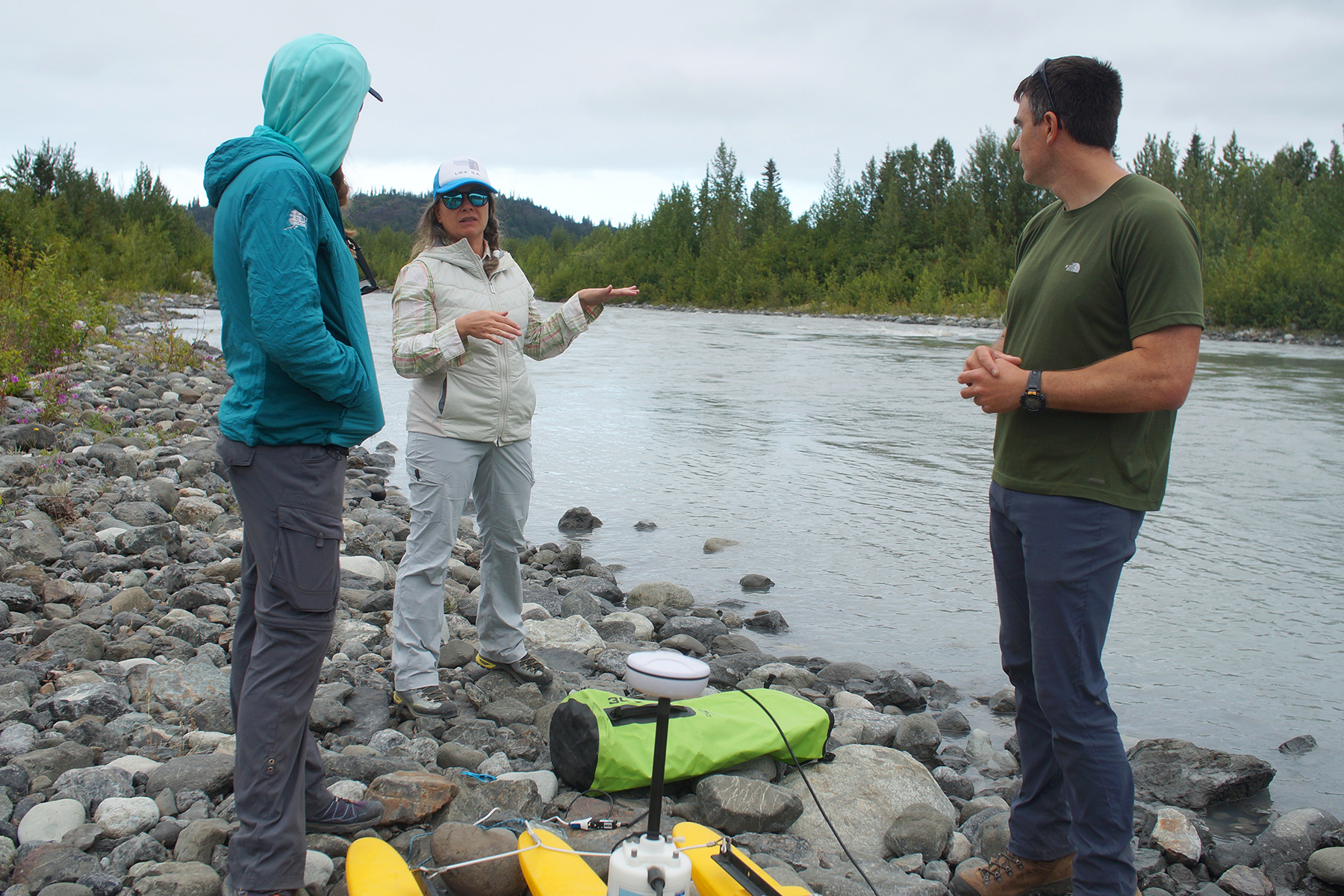
Fire & Ice Coastal Margins “Stream Team” student Sydney Souza, co-lead LeeAnn Munk and faculty Eric Klein confer at Grewingk Glacier stream, off Kachemak Bay, August 6, 2019.
Goal 1: Characterize the hydrological and biogeochemical dynamics of rivers along a glacial to non-glacial watershed gradient and their linkages to coastal oceanography. Researchers gather nearshore data through a number of methods, including drifter deployments, hyperspectral remote sensing, oceanographic sensors, and conductivity, temperature, and depth (CTD) transects. A freshwater “stream team” monitors sensors in watersheds in each region and combines their data streams with in situ coastal measurements. These efforts are creating a rich multi-year dataset of variables including circulation patterns, chlorophyll and dissolved organic matter levels, discharge, stage height, pH, temperature, conductivity, turbidity, dissolved oxygen, salinity and photosynthetically active radiation. This will enable researchers to craft mechanistic models of freshwater and nutrient flux and nearshore circulation, which they will combine with a 30-year hindcast simulation to identify correlations between freshwater forcing, biogeochemistry and ecosystem structure and function for Gulf of Alaska coastal watersheds.
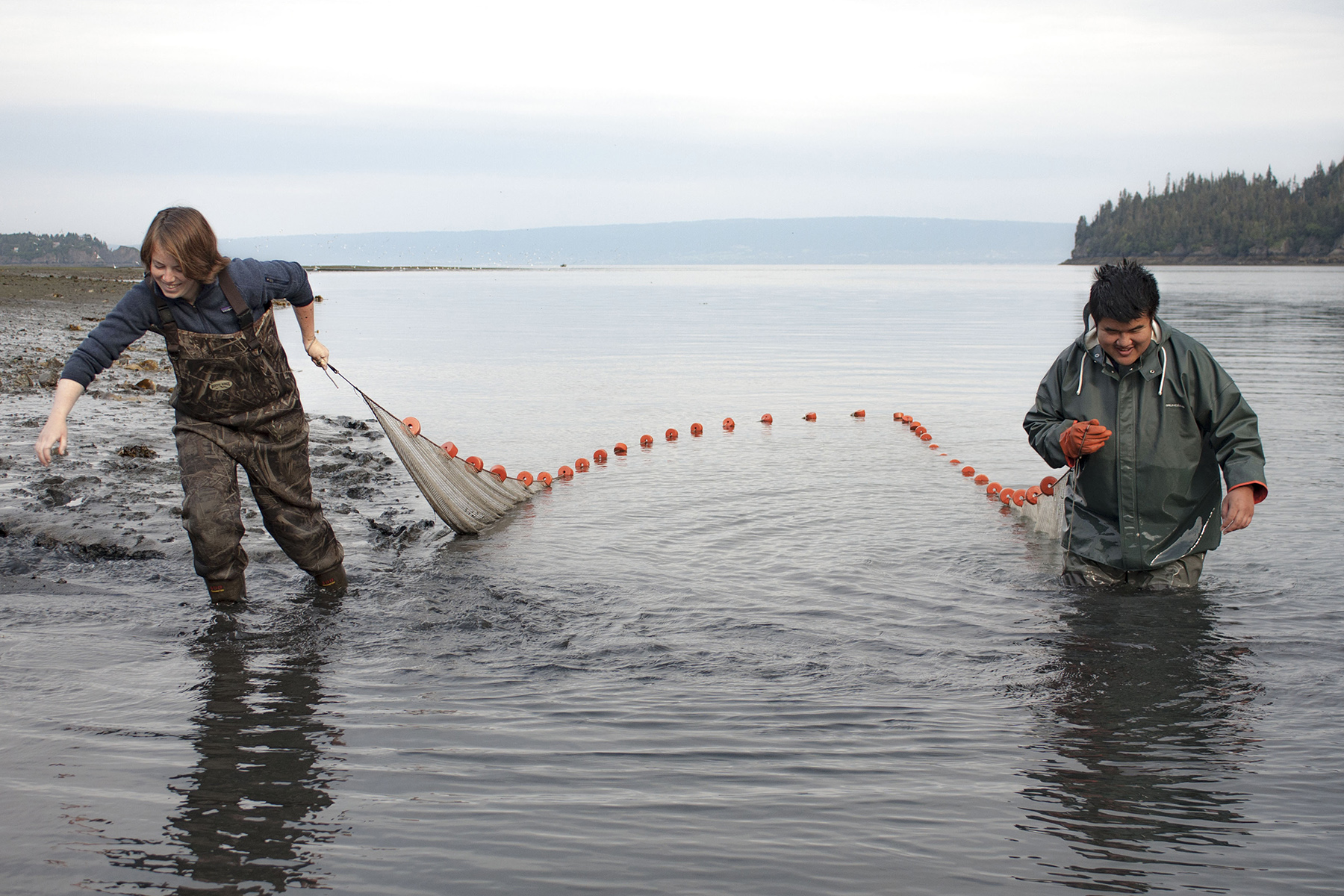
Fire & Ice Coastal Margins undergraduate students Emily Williamson and Brian Zhang conduct a beach seine at Halibut Cove, off of Kachemak Bay, August 1, 2019.
Goal 2: Quantify biological responses of nearshore marine organisms to varying physical and chemical conditions along the glacial to non-glacial gradient. Impacts to coastal waters from glacial retreat and other climate-driven processes will likely affect both biological community structure, as measured by species composition; and primary and secondary production, as measured by organism abundance and biomass. Researchers conduct monthly beach seine, quadrat, and plankton sampling to quantify spatial, seasonal, and interannual variation in nearshore communities. To understand how the trophic ecology of important consumers varies along the glacial to non-glacial gradient, researchers are sampling stomach contents from coho salmon to determine diets, and measuring stable isotopes of carbon and nitrogen in three invertebrate species and primary producers.
Researchers also constructed an Ocean Change Experimental System (OCES), a flow-through laboratory setup designed to test the physiological responses of mussels, chitons, kelp, and salmon to changes in temperature, pH, salinity and combinations thereof. Biological community data, fish diets, and stable isotope data will be modeled as a function of physical and chemical data collected in Goal 1 to quantify species-environment relationships along the glacial to non-glacial gradient, enabling better understanding of how climate-driven changes will impact key species.
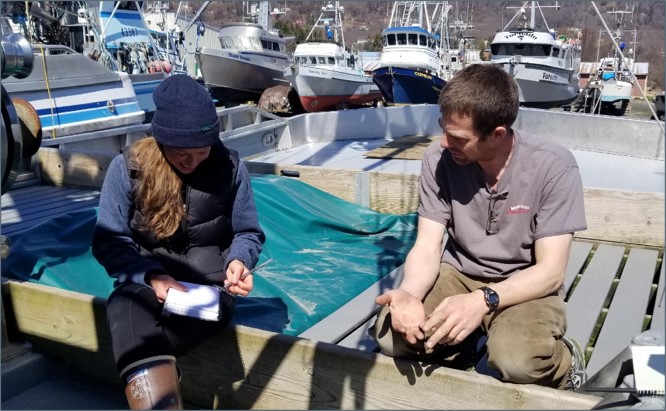
EPSCoR graduate student Emma Kimball interviews a fisherman in Homer, May 2021.
Goal 3: Understand potential responses of coastal resource users to current changes and anticipated future shifts in nearshore marine resources. Researchers are interviewing up to 50 fishers and 30 institutional representatives in the fishing communities of Homer and Juneau about their observations of changes in the environment, ways they have responded to past pressures, and anticipated future changes. Interviews will provide information on past responses to environmental change to identify avenues for adapting to future change.
The help reach these three goals, the Coastal Margins team has hired UAF oceanographer Gwenn Hennon, UAF fish physiologist Jessica Glass, and UAS integrative biologist Julie Schram, and have partially or fully employed four postdoctoral researchers and more than 50 student researchers. Coastal Margins researchers plan to submit at least 40 articles for peer review and hold regular meetings and outreach events with stakeholders. For more information on these efforts visit our impacts and collaborations pages.

